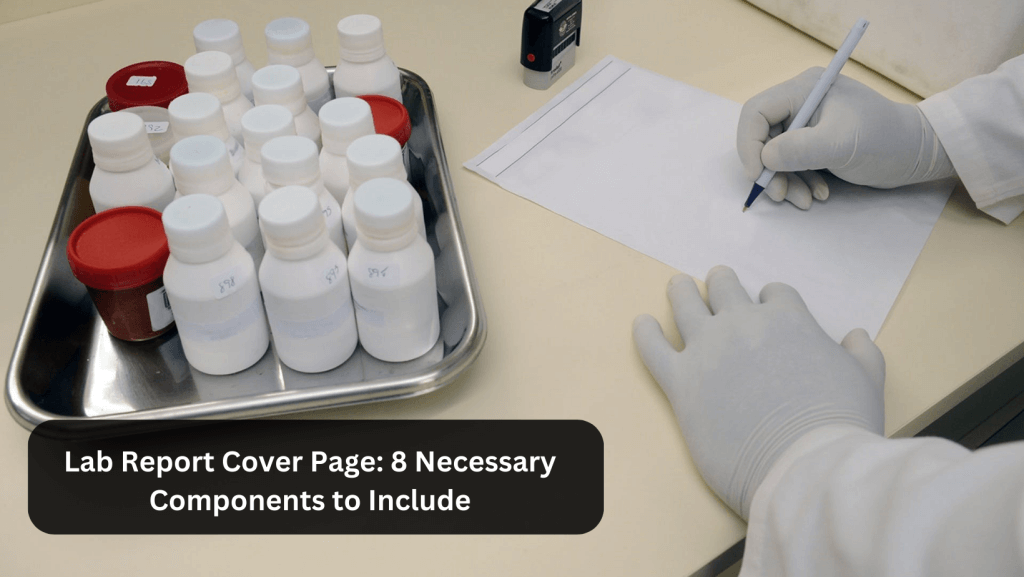A cover page is one of the most essential elements of a lab report with a significant impact on your evaluation. A well-curated lab report cover page is memorable and visually appealing. However, designing a comprehensive lab report cover is also the most challenging task many students grapple with. Choosing the right title and correct words that capture the essence of your report can be a daunting challenge. This article explores what you need to know about writing a memorable cover page and why you need professional guidance to guarantee success. We also help students with their lab report assignments.
What’s a Lab Report Cover Page?
A lab report cover page is the front page of your lab report. It contains the experiment title, names of participants, course code, name of the university, and the date the experiment was conducted and submitted (if applicable). It uses a descriptive title, informing the reader precisely about the contents of the report.
Obstacles in Designing a Cover Page
Creating a comprehensive cover page for your lab that captures all the necessary information can be challenging for many students. Here are the primary hurdles to designing a cover page.
- Determining the Appropriate Title: The title is an important element of your lab report cover page, influencing one’s interest in reading the document or not. Brainstorming on the appropriate title that captures attention is a significant challenge students face.
- Incorporating Participant Names: Incorporating the author’s and lab partner’s names on the cover page requires accurate identification and proper attribution.
- Formatting Challenges: Aligning the cover page with the institution’s or the instructor’s specific guidelines is a great challenge many students struggle to overcome. Font consistency, spacing, and overall design are all critical aspects of your cover page that count in your evaluation. Students must also specify course details on the cover page, complicating the process further.
- Clarity: Unnecessary jargon, synonyms, and abbreviations can derail the effectiveness of your cover page. Many students struggle to create a clear and understandable title for a broad audience.
Components of a Cover Page of a Lab Report
A well-structured lab report cover page comprises specific elements that provide comprehensive information. Here are the key elements that make a cover page complete.
- Title: The title is the most vital element of a lab cover page. It gives the reader a glimpse of the report’s content. Therefore, capturing all elements of the report is crucial.
- Names: The report cover page should feature the names of students and lab partners involved in the experiment. This demonstrates transparency, collaboration, and proper attribution in the report.
- Course Name: Different courses require students to perform experiments on various subject matter. Including the course name provides context and specifies the lab report category.
- Course Code: Each course has a unique course code.Including a course code in the lab report cover page helps identify the specific course, ensuring accurate filling and reference.
- Name of the University: The author’s affiliation is a crucial component of the title page. It signifies the report’s origin and academic context for proper identification.
- Semester: Different experiments are conducted in different courses. This necessitates the inclusion of a semester for clarity, proper documentation, and record-keeping.
- Instructor’s Name: A lab report must include the name of the supervising lab instructor during the experiment. It adds credibility to your report and acknowledges the instructor’s guidance and expertise.
- Date: Depending on the guidelines, students may be required to provide the date the experiment was done or both the experiment and submission dates.
Tips for Formatting a Cover Page of a Lab Report
Formatting a lab report cover page follows the institution’s lab manual guidelines. Most Universities provide comprehensive writing style guides with specific instructions for conducting experiments and documenting outcomes. Here are the key tips to remember when formatting a cover page.
- Font: Most colleges specify the font for the cover page. Use a single or double-spaced 12-point font if it’s not provided.
- Title Length: Keep the title simple, concise, and descriptive, ideally 10 to 15 words. This may vary depending on specific formatting guidelines or instructor preference.
- Abbreviations and Synonyms: Avoid using abbreviations and synonyms in the cover page. This can confuse readers and hinder clear communication and understanding of the lab report’s content and purpose.
Help With Lab Report Cover Page
Creating a cover page may appear straightforward, yet it poses significant challenges to many students. From choosing the appropriate title to effectively conveying the report’s essence within a specific word count, crafting a comprehensive cover page demands careful planning and expertise. Talk to our experts today for guidance on creating a professional lab report cover page that creates a lasting impression on the instructor.




